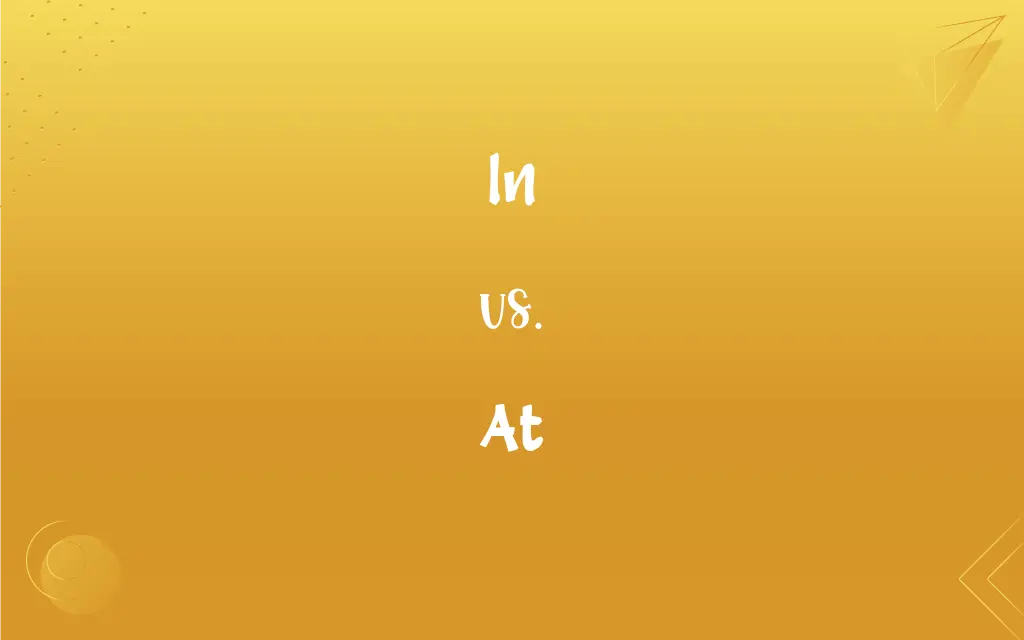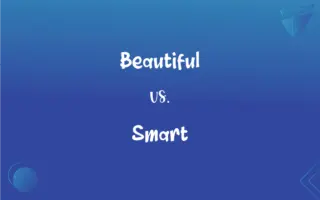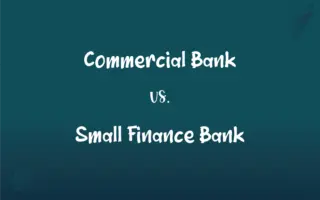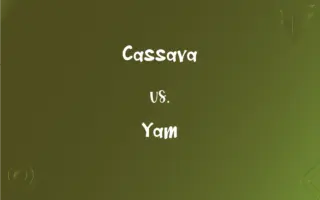In vs. At: What's the Difference?
Edited by Aimie Carlson || By Janet White || Published on December 6, 2023
"In" often denotes being inside or within a boundary, while "at" indicates a specific point or location.

Key Differences
"In" is used to express a state of being enclosed or surrounded, often indicating presence within a larger area or volume. For example, "in the room" suggests being inside the room. Conversely, "at" refers to a precise location or point, used to denote a more specific position. For example, "at the door" suggests being right by the door, not inside it.
"In" can also signify participation or inclusion within a group or event, such as "in a team." It implies being a part of something larger. On the other hand, "at" is often used to indicate presence at a site of an event or activity, focusing on the location rather than inclusion, like "at the concert."
In terms of time, "in" is used to indicate a period or duration, such as "in the morning," implying a time frame within a day. In contrast, "at" specifies a precise time, like "at 10 AM," pinpointing a specific moment rather than a duration.
"In" is also employed for states or conditions, like "in love" or "in motion," suggesting a condition or status. Whereas "at" is commonly used in idiomatic expressions to signify a state of being, such as "at peace" or "at rest," which implies a specific state at a point in time.
"In" can be used to indicate a manner or way of doing something, like "in a hurry." It suggests a mode or condition. Meanwhile, "at" can be used to indicate direction or target, such as "at the target," focusing on the endpoint of an action.
ADVERTISEMENT
Comparison Chart
Location
Inside or within a boundary
Specific point or location
Time
Duration or period
Specific point in time
Participation/Inclusion
Being part of a larger entity
Presence at a location/event
State/Condition
Describes a condition or status
Specifies a state at a point
Manner/Direction
Indicates a manner or way
Indicates direction or target
ADVERTISEMENT
In and At Definitions
In
Currently fashionable or popular.
That style is really in right now.
At
Denoting a specific point in time.
I will start at noon.
In
Occurring during a period or at a point in time.
I'll return in an hour.
At
Denoting a specific location or arrival in a particular place.
Meet me at the library.
In
Present at home or one's place of work.
He is not in at the moment.
At
Engaged in a particular activity.
He is good at mathematics.
In
Positioned inside a container, place, or area.
The cat is in the box.
At
Indicating a rate, amount, or level of something.
They sell strawberries at $3 per pound.
In
Into a state of awareness or consciousness.
She finally came in from her daydream.
At
Directed towards a particular thing or person in terms of action or thought.
She laughed at the joke.
In
Within the limits, bounds, or area of
Was hit in the face.
Born in the spring.
A chair in the garden.
At
In or near the area occupied by; in or near the location of
At the market.
At our destination.
In
From the outside to a point within; into
Threw the letter in the wastebasket.
At
In or near the position of
Always at my side.
At the center of the page.
FAQs
What does "in" indicate in terms of location?
"In" generally means being inside or within something.
How is "at" used in the context of time?
"At" specifies a precise time, such as "at 5 PM."
Can "in" be used to indicate a time frame?
Yes, "in" often denotes a period or duration, like "in the morning."
Is "in" used for expressing participation?
Yes, it indicates being part of a group, like "in a team."
How does "at" function in idiomatic expressions?
It's often used to denote a specific state, like "at peace."
What’s the difference between "in the park" and "at the park"?
"In the park" suggests being inside the park, while "at the park" is more about being at a specific point within or near the park.
Is "in" appropriate for large geographical areas?
Yes, like "in America" or "in the city."
Can "in" describe a state or condition?
Yes, such as "in motion" or "in love."
When should "at" be used for addresses?
For specific addresses or locations, like "at 123 Main St."
When do you use "at" for locations?
Use "at" to specify a precise point or location.
What does "at" imply in event contexts?
It suggests presence at a specific event site, like "at the concert."
What role does "at" play in phrases like "at a glance"?
It specifies a particular manner or point of action.
Can "in" be used for modes of transportation?
Yes, like "in a car" or "in an airplane."
Do "in" and "at" have the same meaning in all dialects of English?
Their core meanings are consistent, but usage can vary slightly in different dialects.
Can "in" refer to a future time?
Yes, as in "in a few days."
Is "at" used for events or appointments?
Yes, like "at my doctor’s appointment."
How do "in" and "at" differ in email addresses?
"In" is not used; "at" denotes the '@' symbol in email addresses.
How does "in" work in expressions like "in a hurry"?
It indicates the manner or way of doing something.
How is "at" used in educational contexts?
To denote being present at a place of learning, like "at school."
Can "in" and "at" be interchangeable?
Sometimes, but they often have distinct uses based on context.
About Author
Written by
Janet WhiteJanet White has been an esteemed writer and blogger for Difference Wiki. Holding a Master's degree in Science and Medical Journalism from the prestigious Boston University, she has consistently demonstrated her expertise and passion for her field. When she's not immersed in her work, Janet relishes her time exercising, delving into a good book, and cherishing moments with friends and family.
Edited by
Aimie CarlsonAimie Carlson, holding a master's degree in English literature, is a fervent English language enthusiast. She lends her writing talents to Difference Wiki, a prominent website that specializes in comparisons, offering readers insightful analyses that both captivate and inform.








































































